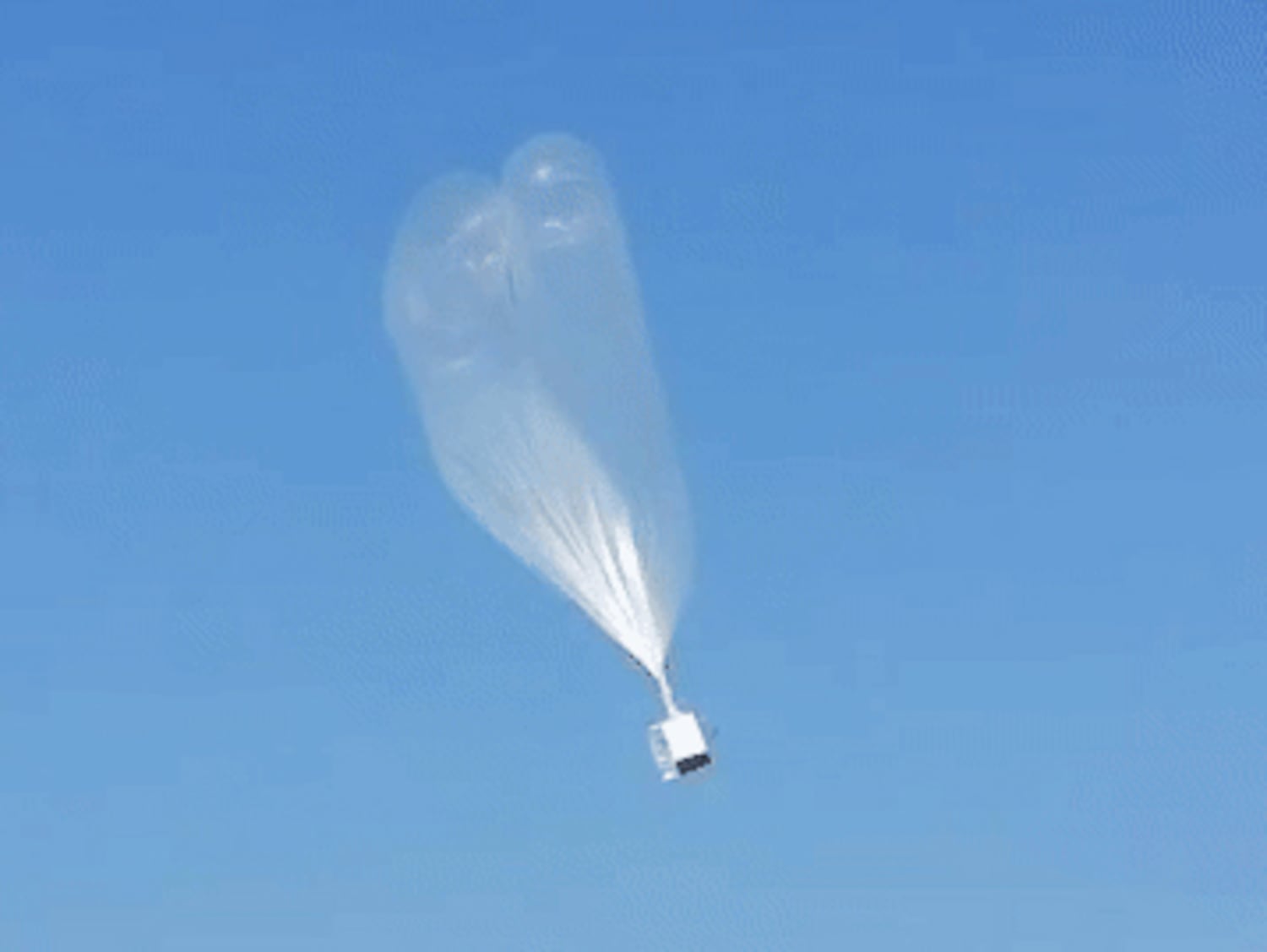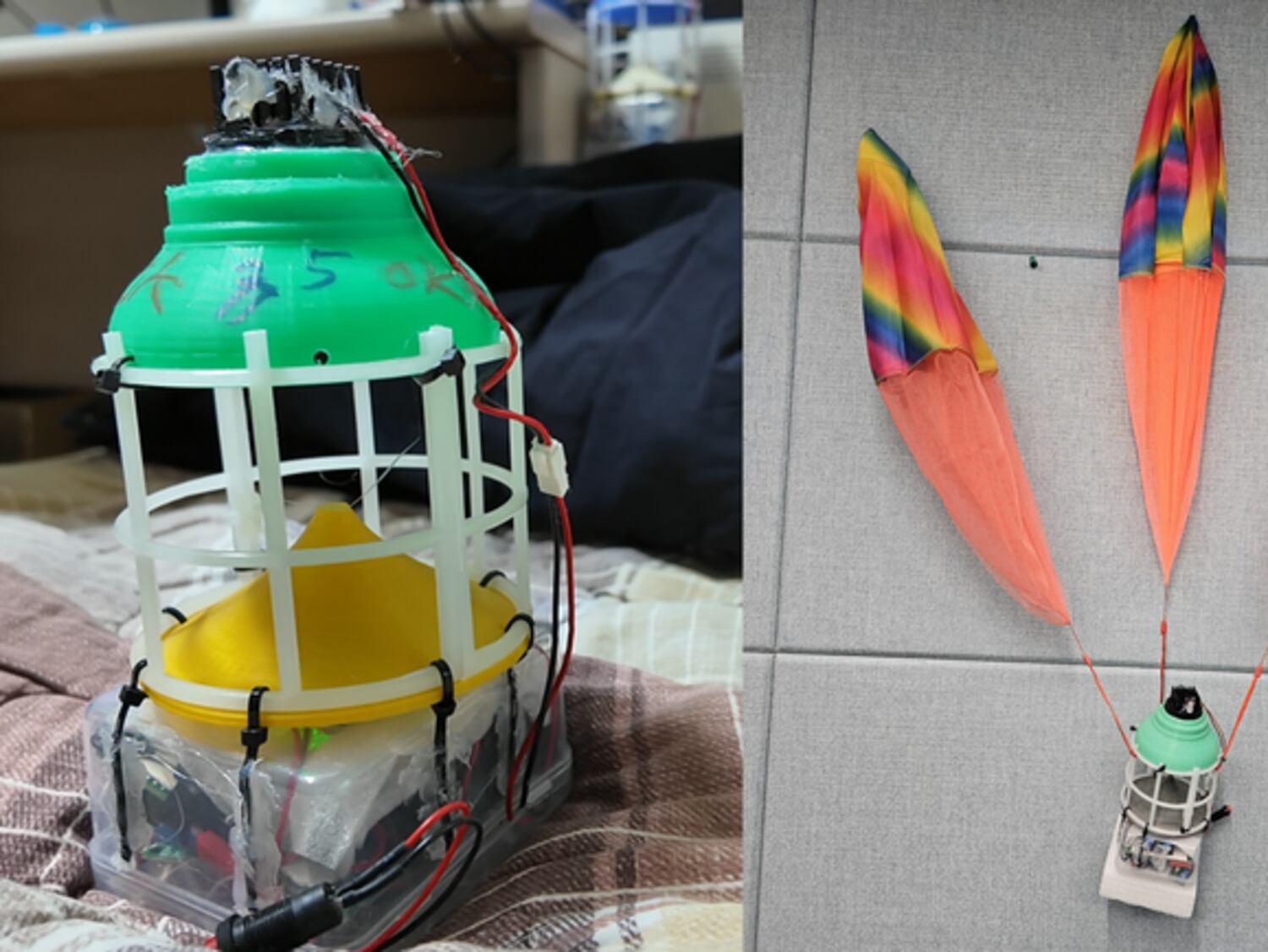This is part 3 of a 3-part series, “Along the DMZ: Life at the Korean Border.” Read parts 1 and 2.
Read a version of this story in Korean
A South Korean group has designed traceable “smart balloon” that drops leaflets at specific intervals over North Korea, instead of dumping them all at once — aiming to reach more people in the reclusive country.
The US$1,000 balloons, which include GPS equipment showing their path over North Korea, can also drop loud speakers that play audio messages as well as mp3 audio players loaded with South Korean pop music, which is banned north of the border.
These devices were designed and handmade by members of the Committee for Reform and Opening up of Joson–a non-government-affiliated civic group–from their secret workshop inside a Seoul apartment.
Such high-tech balloons are among the most advanced in grass-roots attempts by private South Korean groups who have for decades launched balloons to try to change the hearts and minds of those on the other side of the world’s most fortified border.
“Kim Jong Un, who denies the nation and opposes unification,” goes one recording programmed into a loudspeaker, referring to the North’s supreme leader “is a traitor to the nation, an anti-unification element, and a traitor to the revolution!”
Another group — which has no official name — uses balloons to send over cold medicine, instant coffee, batteries and other daily supplies along with leaflets.
They say reports of the balloons in North Korea’s state-run Korean Central News Agency, or KCNA, confirm their missions are successful.
On Nov. 17, photos of several downed balloons and their contents appeared in state media with a statement by Kim Yo Jong, the sister of Kim Jong Un.
She denounced the balloons of the “shameful and dirty acts of the ROK scum,” using the abbreviation for South Korea’s official name, the Republic of Korea.
Not welcome
North Korea has been retaliating with its own balloons–laden with trash and human waste–that have landed in South Korean streets and farmland.
North Korea also cranks up huge loudspeakers that blare ominous noises at night aimed at disrupting the sleep of South Korean residents living near the border.
Many of those residents want the North to stop antagonizing them, and some have blamed the balloon launches for provoking the North.
The South Korean government is not involved in the balloon launches, and some leaders have seen it as counterproductive.
In fact, the practice was banned for five years under the previous administration in Seoul as a gesture of good faith to draw Pyongyang to the negotiating table over its nuclear and missile programs.
But in 2023, the balloon-launches were allowed to resume under the current, more hardline administration.

The balloon-launching organizations tend to be made up of people who have escaped from North Korea who are politically aligned with South Korean conservatives.
The Joson group that developed the smart balloon can monitor where they float, but cannot guide or retrieve them. They move according to the whims of the wind.
But the technology they use has grown ever more sophisticated, including a timer that releases the leaflets at intervals as short as six seconds up to as long as 30 minutes, said an official of the group who asked not to be identified.
“If you set it in such a way, accounting for the wind and location, it will scatter leaflets over the entire area,” he said. “One sheet will fall every few hundred meters.”
RELATED STORIES
Loud, eerie noises from North Korean speakers take a toll on villagers across border
‘Air raid’ alarm as North Korea sends trash balloons across DMZ
N Korea issues military threats after Seoul overturns leaflet ban
The organization has also designed a loudspeaker that can be parachuted from a balloon to the ground, and it also drops mp3 audio players loaded with South Korean music.
“We are trying to provide one mp3 player per soldier, but we’re not quite there yet,” the official said. “If it drops from the sky like this, the parachute will open. During the day, the parachute’s color can’t be missed, so it can be easily found, and at night, this flashing light will activate so soldiers can pick it up when they see it.”
Along the wall of the organization’s workshop inside a Seoul apartment were several other devices, which the official said were in various states of completion.
“They have to be taken apart, reassembled, and integrated [into the balloon],” he said. “This wire needs to connect here. It’s a bit complicated. It’s all done manually. ”
Domestic debate
As they are aware of the opposition from South Korean border residents to their activities, some of the groups launch their balloons at night.
“When we go into the valley in the middle of the night, at midnight, or 2 to 3 o’clock in the morning, cars follow us,” the activist with the unnamed group said. “If we feel something strange at that time, we immediately turn the car around and abort.”
The activist said they were followed by police several times, so they carefully plan out each launch, with backup launch locations.
Despite local complaints, the activist said it was still worth it to send the balloons.
“It may not be comfortable for them, but when we think about the suffering of the North Korean people who are starving and shivering in the cold, we wish the residents (on our side) would understand a little bit,” she said. “We have to keep doing this.”

The official from the Committee for Reform and Opening up of Joson also acknowledged the concerns of the border residents, but said the launches must continue because the leaflets tell the truth about Kim Jong Un and his family, who enjoy god-like status as the heads of a cult of personality.
“We completely eliminated the idolization of Kim Jong Un and his family through the leaflets we sent,” the person said.
North Korea is a dying country in its final stages, he said.
“It’s something that will inevitably happen someday,” he said. “The most important thing is how to manage those last moments and end it quickly so that the suffering of North Korean people can be alleviated as soon as possible.”
Translated by Claire S. Lee and Leejin J. Chung. Edited by Eugene Whong and Malcolm Foster.











